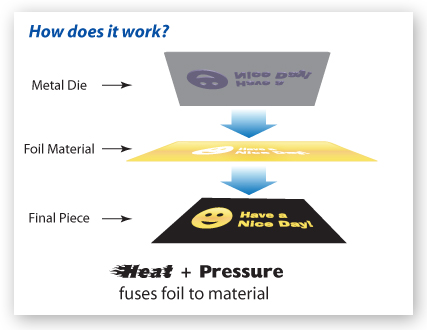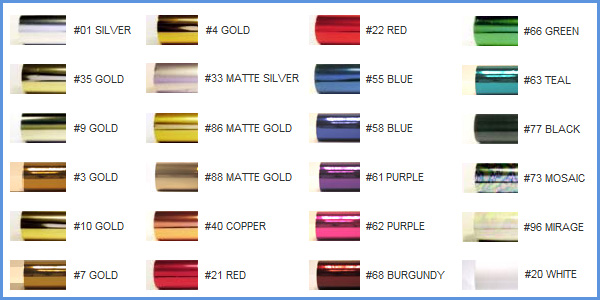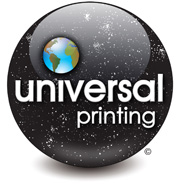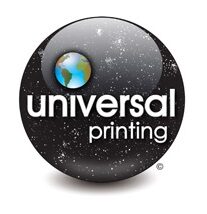Graphic Design Tip! How Does Foil Stamping Work?
’Tis the Season to send out Holiday Cards! The weather gets a little cooler and winter is right around the corner, which can only mean one thing: Holiday Season! It’s time to start breaking out the decorations and start singing carols like that old holiday classic Silver & Gold. There’s just something classy about silver and gold. It’s used for expensive jewelry, it backs our nation’s currency, it’ used for trophies, awards, and medals. Silver and Gold simply epitomize class, value, and sophistication.
You’ll often see gold, silver, or other metallic inks used on stationery, invitations, and a variety other printed materials. They look nice, but somehow lack that special POP. For those cases, where metallic ink just won’t do, there’s another solution: FOIL STAMPING.
When planning for foil stamping, it’s important to understand a few things about the process.
- Foil Stamping is NOT the same as embossing. They are often done together, but they do not HAVE to be. Embossing changes the surface of the paper or cardstock to create a raised image (or a lowered image in the case of “debossing”). Foil is also done using a die and adding heat and pressure, but you can add foil to your project without needing to raise or lower the surface of the image.
- An even surface is better. The best impact is going to be on smooth coated surfaces, like Cast-Coated or High Gloss stock. Dull or Matte coated stocks take foil well also, as does smooth uncoated sheets. Heavier stocks are more durable and hold up better to the process, although text weights can be used. Textured papers like linen or felt are more difficult, since the surface texture and effect the way the foil is pressed onto the sheet, and your image might not be as crisp as it could be. Also, while you CAN foil on top of wax-free inks, you should avoid using coatings or varnishes in the area to be foil stamped.
- Line art is a MUST. In order for the foil to fuse to the stock properly, there needs to be enough surface area to grab onto. Halftone dots and super thin lines won’t fuse as easily and may flake off, which will appear as “broken” or “missing” during a long production run.
What you need…
The Die: This is a metal plate with the reversed image raised from the surface, like you would see with a stamp. Typically these will be made of brass, copper, or magnesium. Buying a die can be a little pricey, but they can be used over and over.
The Foil: Foil is generally manufactured on a film roll made up of pigment, clear mylar, and a heat-activated adhesive.
The Stuff: This is what you want to foil stamp. It can be business cards, greeting cards, letterhead, pocket folders, certificates, invitations, or anything else you can think of.
How it works…
 At its simplest form, Foil Stamping comes down to three things: Heat, Pressure, and Time.
At its simplest form, Foil Stamping comes down to three things: Heat, Pressure, and Time.
The foil film is positioned between the heated metal die and the material receiving the foil.
The die presses the foil onto the material and the heat activates the adhesive.
Under pressure, the foil fuses onto surface of the item and is released from the mylar carrier everywhere the raise image has pressed. If the heat is too low or the time is too short, then the foil won’t fuse and stick. If the heat is too high or the time is too long, the foil may bubble or blister; or the image edges may appear rough or ragged.
Another great thing about foil is that you’re not limited to just metallic effects. You can find anything from gloss to dull, colors and fluorescents, holographic – there’s even clear! See the chart below for some of the most common foils available, but these may vary. Contact us for other colors or samples.
REMEMBER! Foil does NOT follow the Pantone Matching System for color. So while you can’t MATCH a PMS color, you may be able to find something close.


Universal Printing
Offering quality printing and communications solutions to
Raleigh, Durham, Chapel Hill, and the Triangle since 1979.
www.universalprinting.com
Tags: Adobe InDesign tips, foil stamping, gold foil, graphic design, Graphic Design Durham, graphic design raleigh, setting up your files, tips and tricks

Great explanation about foil stamping and embossing for people who are not familiar with this operations but want to learn something more offset printing technology games .
Hi there!
I am getting some foil printing done on the cover of a book I am self publishing and printing in China. Do you know how I should indicate the gold foil in my InDesign files? I have no idea. The text and image is just black at the moment. Any advice would be appreciated.
Thank you!
Great question, Bronwyn!
I’ll send you an email with more details, but in summary you can either create a separate file with the foil elements in black, or you can use a separate layer and create a spot color for the foil named gold foil. I hope this is helpful!
Nice blog.
Can foil printing be combined with other printing methods? For example, can I have a digitally printed image in the background with foil text stamped on top of that?
Hi Tim. The short answer is “usually.” As long as the inks or toners you’re using are wax-free and won’t be negatively effected by heat. It will also depend on the stock you’re using. Coated stocks are more likely to “pick” if the coated surface of the paper doesn’t bond fully with the ink. This will cause the foil to flake off. Generally speaking, it’s best to contact the vendor who will be providing the foil stamping for you. They will have more specific information about the types of foil and their equipment.